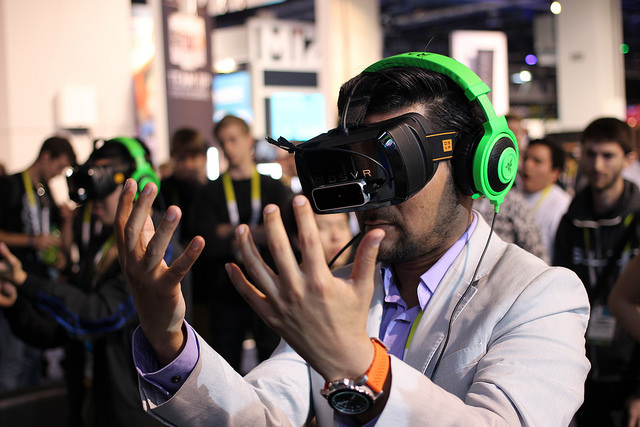Like this article? rabble is reader-supported journalism. Chip in to keep stories like these coming.
It’s seemed to me for the last few years that reading the coverage of the Consumer Electronics Show in Las Vegas each January feels a bit like taking a virtual reality tour through a Sky Mall catalogue. The CES show is gadget nerdvana. Every company with two engineering students, a soldering iron and access to a junk drawer full of integrated circuits and plastic housings seems to be out in force with the dumbest, ugliest gizmos on the planet that serve no real purpose whatsoever. You can get a Bluetooth speaker for your vagina, a plant-watering robot or a Fitbit baby booty. And that’s all from IBM — you should see what the Taiwanese knock-off shops are selling.
The truth is a lot of what gets launched at CES in Vegas, stays in Vegas. Companies use the event to toss poop at a wall to see what sticks, to call attention to themselves or just to show what completely useless dingus they can build now that GPS radios cost a nickel.
So, it was ironic this year, that once you ignored all the nonsense, what was left could give you a VR tour. That’s because virtual reality seemed to be everywhere in the coverage. VR was to CES 2016 what 3D TV was to CES 2013. And, of course, 3D TV, in its own right, turned out to be the Smell-o-Vision of 2014.
There was VR gear for gamers (rich gamers who could just as economically join a battle reenactment society and throw $100 bills at their enemies). There was VR for industry, for doctors, for designers, for porn fanciers — don’t ask. There were cheap Google Cardboard VR headsets you can slide your smartphone into. There were even Google Cardboard headsets made of fold-up plastic. In short, creating the simulated experience of actually being in an artificial world was huge. Which is perfect for a huge trade show that takes place in Vegas.
It’s unclear how much of the VR gear normal people will get to experience this year. Gamers across the Internet lost their shit when Oculus Rift, the highest profile of the VR purveyors, announced its headset would cost US$600. And, that’s on top of the price of a water-cooler, dilithium crystal-powered gaming computer you’ll need to run it. Sony’s PlayStation VR is due out later this year, but the price is a question mark. Same goes for HTC’s offering, the Vive.
And even the low-end, the relatively cheap VR experiences from Samsung’s Gear VR or Google Cardboard haven’t set the world on fire, yet. And, a lot of the experiences they offer aren’t true, interactive VR. They’re often just 360-degree movies with users “on a rail.” You don’t get to explore on your own, open doors or, well, touch anything. That kind of interactivity will take expensive controllers, already being tested for expensive VR rigs but nowhere near ready for prime time at the low end.
It will be, I think, another two years before VR really makes a splash. And, by then, it may be supplanted in all but the gaming and training arenas by augmented reality products in motorcycle visors, sunglasses and bicycle helmets. Those devices, at least, will allow you to go out in public without looking like a blind person wearing ski goggles.
And, of course, at CES 2018, all of this will be supplanted by 3D VR conference goggles that make you feel like you were walking around someplace demonstrating products that might actually make it to market.
Listen to an audio version of this column, read by the author, here.
Photo: Maurizio Pesce/flickr
Wayne MacPhail has been a print and online journalist for 25 years, and is a long-time writer for rabble.ca on technology and the Internet.
Like this article? rabble is reader-supported journalism. Chip in to keep stories like these coming.



